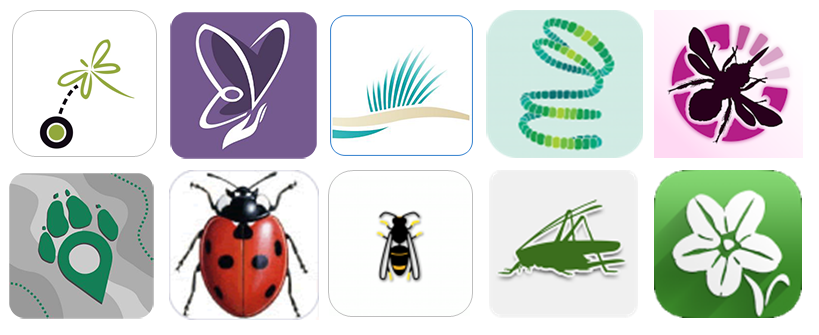Apps and technology
Software for biological recording
Behind the scenes the iRecord development team continue to maintain the online systems needed for such a large and complex recording platform. A major update to the Drupal software that iRecord uses was implemented in late 2021, to ensure that the site remains secure and up to date, and we continue to monitor and improve the performance of the systems wherever we can.
Increased data-sharing
Two new sources of data are now flowing into iRecord for verification purposes. One relates to the launch in 2021 of iNaturalistUK. The NBN Trust is working with BRC and the Marine Biological Association to steer the iNaturalistUK project, and make the records from this source more widely available. By bringing the records into iRecord they can be verified alongside other data, and made accessible to national recording schemes, local environmental records centres, and on to the NBN Atlas. For more on this see the iNaturalist pages on iRecord (including information for iNaturalistUK users on how to make records as useful as possible for iRecord verifiers) and on the NBN website.
BRC has also worked with the British Trust for Ornithology to share non-bird records from BirdTrack with iRecord. BirdTrack is increasingly being used to record particular species groups, including butterflies, dragonflies, mammals and orchids, and these records are now coming in to iRecord for verification. Bird records from iRecord will be going to BirdTrack for verification in future, once this development is completed.
Some of the above work has been supported by Natural England as part of their Natural Capital Ecosystem Assessment work, and we are grateful for this support.
Once collated and verified via iRecord, many recording schemes now use BRC's automated process for sharing records to the NBN Atlas. These datasets are updated on a monthly basis, enabling the prompt sharing of biodiversity data to be used more widely, and to inform conservation and research. For more information see the iRecord Help page.
The rapid technological advances seen in the past decades have changed the way many of us live our lives. BRC has developed a number of smart phone apps, websites and analytical tools that harness technologies to support biological recording. The BRC provides website hosting and development support for many recording schemes and projects.
The number of people submitting wildlife sightings online is increasing dramatically. Over 2 million records per year are now coming into the data warehouse that sits behind iRecord, from almost 20,000 registered active user accounts per year on iRecord, plus the large number of additional recorders who use other entry points such as iNaturalistUK, BirdTrack or one of the many Indicia-based websites that link to the data warehouse
The taxonomic breadth of data collected through iRecord on behalf of recording schemes is unrivalled. The quantity and quality of data offers great opportunities for research and conservation but also presents many technological challenges.
Once verified, records are also made available on the National Biodiversity Network (NBN) Atlas, a world-leading online tool for sharing observations collected by a wide range of partner organisations.
iRecord is a website (and mobile app) for sharing wildlife observations (biological records), including associated photos – you can register quickly and for free, and then add your own records for others to see, and you can see what has been recorded by others. A growing team of expert naturalists give their time to verify (i.e. ensure the accuracy) of these records, and the system is constantly being improved to maximise the efficiency of this process.. iRecord links to a growing set of ‘on-the-go’ biological recording apps, such as those for ladybirds and butterflies which allow users to submit records containing GPS location, photographic evidence and a range of useful supplementary information.
Mobile Apps
BRC supports recording using mobile apps. They will make it easier for more people to join in. By using GPS, camera, clock, and mobile network, we expect to see more records that are more accurate.
We have built apps for recording butterflies and ladybirds. We have also helped other organisations such as the Environment Agency and the Mammal Society.
The sightings go to iRecord, allowing recorders to see all their observations in one place.
See the full list of apps.
Technology has increased and diversified the ways that biological records are submitted, analysed and shared. BRC is using its wealth of experience of biological recording and supporting technologies to develop and share tools, enabling schemes to meet the challenge of diverse data types from numerous providers. BRC has helped create tools such as the Indicia software, for developers of online recording systems, and rNBN for researchers, to help address these challenges.





